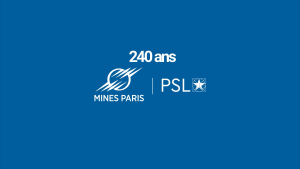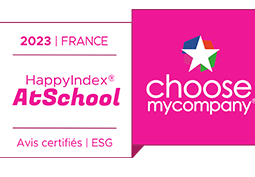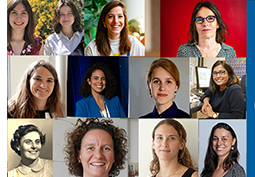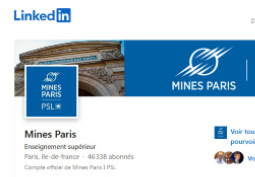| Mots-clés | Laminage à froid, lubrification, contact, frottement, modélisation, méthode des éléments finis Cold rolling, lubrication, contact, friction, modeling, finite element method |
| Résumé | Dans le laminage à froid, la lubrification joue un rôle clé : le frottement ne doit pas être élevé pour éviter le surchauffement, ni trop bas afin d'éviter le glissement entre la tôle et les rouleaux. Le processus de lubrification s'articule autour des poches de lubrifiant piégé dans les creux de la rugosité, qui sont ensuite redistribuées à l'interface sous la pression très élevée du contact entre les rouleaux et la tôle [1,2]. Ce processus, désigné sous le nom de lubrification micro-plasto-hydrodynamique (MPH), reste mal compris et représente un défi en termes de modélisation et simulation, car il implique toutes les non-linéarités mécaniques telles que grandes déformations, visco-plasticité et contact avec frottement, tout cela en couplage avec le comportement du fluide visqueux interfacique.
Ce projet de thèse vise à développer et intégrer un modèle constitutif pour optimiser la lubrification dans le processus de laminage à froid. La phase I du projet débute par une étude approfondie du comportement des poches de lubrifiant compressées sans cisaillement, s'appuyant sur des travaux antérieurs [3,4] et des simulations numériques en éléments finis pour comprendre l'influence de la morphologie stochastique des surfaces rugueuses. Ensuite, l'adaptation du logiciel d'éléments finis maison, Z-set (C++), sera effectuée afin d'incorporer les effets de cisaillement dans l'interface de contact. Les effets thermiques, ainsi que leur rôle dans la modification du frottement effectif, seront également pris en compte. Une étude numérique paramétrique sera réalisée pour étudier la lubrification et la redistribution du lubrifiant sous diverses conditions opérationnelles [5].
Grâce à cette étude, un modèle analytique ou semi-analytique tridimensionnel sera construit en extrapolant les résultats bi- et tridimensionnels. La validation de ce modèle se fera en collaboration avec ArcelorMittal Maizières Research à Maizières-lès-Metz, où des essais expérimentaux seront conçus et réalisés (phase II) pour affiner et confirmer la pertinence du modèle.
L'ultime phase du projet (phase III), qui aura lieu à l'Université de Liège, laboratoire LTAS-Mécanique numérique non linéaire, se concentre sur l'intégration de ce modèle thermo-mécanique dans Metalub, le logiciel métier utilisé par ArcelorMittal. Cela nécessite une préparation minutieuse pour adapter le modèle aux besoins spécifiques de Metalub, suivie d'une modification du code source de Metalub, écrit en C++, et d'une validation finale utilisant des données expérimentales pour assurer l'exactitude et l'efficacité du modèle intégré. Ce projet embrasse une approche multidisciplinaire, combinant modélisation numérique, analyse expérimentale et développement logiciel pour améliorer les processus industriels de laminage à froid. In cold rolling, lubrication plays a key role: friction must be neither too high to avoid overheating, nor too low to prevent slippage between sheet and rollers. The lubrication process revolves around pockets of lubricant trapped in the hollows of the roughness, which are then redistributed to the interface under the very high pressure of contact between the rollers and the metal sheet [1,2]. This process, known as micro-plasto-hydrodynamic (MPH) lubrication, remains poorly understood and represents a challenge in terms of modeling and simulation, as it involves all the mechanical non-linearities such as large deformations, visco-plasticity and frictional contact, all coupled with the behavior of the viscous interfacial fluid.
The aim of this thesis project is to develop and integrate a constitutive model to optimize lubrication in the cold rolling process. Phase I of the project begins with an in-depth study of the behavior of shearless compressed lubricant pockets, building on previous work [3,4,5] and numerical finite element simulations to understand the influence of stochastic rough surface morphology. Next, adaptation of the in-house finite element software, Z-set (C++), will be carried out to incorporate shear effects in the contact interface. Thermal effects, and their role in modifying effective friction, will also be taken into account. A parametric numerical study will be carried out to investigate lubrication and lubricant redistribution under various operating conditions [6].
Based on this study, a three-dimensional analytical or semi-analytical model will be built by extrapolating the two- and three-dimensional results. This model will be validated in collaboration with ArcelorMittal Maizières Research at Maizières-lès-Metz, where experimental tests will be designed and carried out (phase II) to refine and confirm the model's relevance.
The final phase of the project (phase III), which will take place at the University of Liège, LTAS-Nonlinear Numerical Mechanics laboratory, focuses on integrating this thermo-mechanical model into Metalub, the engineering software used by ArcelorMittal. This requires careful preparation to adapt the model to Metalub's specific needs, followed by modification of Metalub's source code, written in C++, and final validation using experimental data to ensure the accuracy and efficiency of the integrated model. This project embraces a multidisciplinary approach, combining numerical modeling, experimental analysis and software development to improve industrial cold rolling processes. |
| Profil candidat | Ingénieur et/ou Master recherche - Bon niveau de culture générale et scientifique. Bon niveau de pratique du français et de l'anglais (niveau B2 ou équivalent minimum). Bonnes capacités d'analyse, de synthèse, d'innovation et de communication. Qualités d'adaptabilité et de créativité. Capacités pédagogiques. Motivation pour l'activité de recherche. Projet professionnel cohérent.
Pré-requis (compétences spécifiques pour cette thèse) :
Eléments finis, programmation (C++ et Python)
Pour postuler : Envoyer votre dossier à recrutement_these@mat.mines-paristech.fr avec une copie à vladislav.yastrebov@minesparis.psl.eu comportant
• un curriculum vitae détaillé
• une copie de la carte d'identité ou passeport
• une lettre de motivation/projet personnel
• des relevés de notes L3, M1, M2
• 2 lettres de recommandation
• les noms et les coordonnées d'au moins deux personnes pouvant être contactées pour recommandation
• une attestation de niveau d'anglais Engineer and / or Master of Science - Good level of general and scientific culture. Good level of knowledge of French (B2 level in French is required) and English. (B2 level in English is required) Good analytical, synthesis, innovation and communication skills. Qualities of adaptability and creativity. Teaching skills. Motivation for research activity. Coherent professional project.
Prerequisite (specific skills for this thesis):
Finite element method + programming skills (C++ and Python)
Applicants should supply the following :
• a detailed resume
• a copy of the identity card or passport
• a covering letter explaining the applicant's motivation for the position
• detailed exam results
• two references : the name and contact details of at least two people who could be contacted
• to provide an appreciation of the candidate
• Your notes of M1, M2
• level of English equivalent TOEIC
to be sent to recrutement_these@mat.mines-paristech.fr and vladislav.yastrebov@minesparis.psl.eu |
| Références | [1] Kuznetsov, Y.A., 1985. Effect of fluid lubricant on the contact characteristics of rough elastic bodies in compression. Wear, 102(3), pp.177-194.
[2] Azushima, A. and Kudo, H., 1995. Direct observation of contact behaviour to interpret the pressure dependence of the coefficient of friction in sheet metal forming. CIRP annals, 44(1), pp.209-212.
[3] Shvarts, A.G. and Yastrebov, V.A., 2018. Trapped fluid in contact interface. Journal of the Mechanics and Physics of Solids, 119, pp.140-162.
[4] A.G. Shvarts, J. Vignollet, V.A. Yastrebov. 'Computational framework for monolithic coupling for thin fluid flow in contact interfaces'. Computer Methods in Applied Mechanics and Engineering, 379:113738 (2021).
[5] Carretta, Y., Boman, R., Bech, J., Legrand, N., Laugier, M. and Ponthot, J.P., 2017. Numerical modelling of microscopic lubricant flow in sheet metal forming. Application to plane strip drawing. International Journal for Numerical Methods in Engineering, 112(3), pp.203-237.
[6] Azushima, A., 2022. Tribological Technology in Sheet Metal Forming. Springer. |




 Lecture
Lecture





